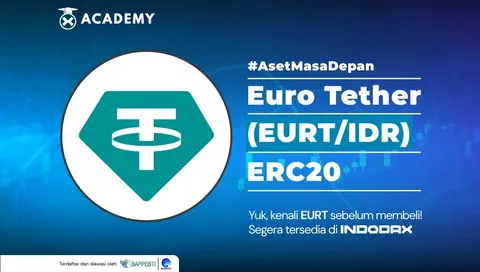Tether, the powerhouse behind USDT—the world’s leading stablecoin by market cap—has taken a significant step by discontinuing its EURT stablecoin in the EU market. The move has raised questions about the future of stablecoins in a region where regulatory scrutiny has escalated.
In this post, we delve into the reasons behind this decision, its implications for the stablecoin ecosystem, and how it reflects the broader trends in crypto regulation within the European Union.

Understanding Tether and the EURT Stablecoin
Tether, often synonymous with stability in the volatile world of cryptocurrencies, has maintained its dominance through assets pegged to fiat currencies. While USDT represents the U.S. dollar, EURT was Tether’s attempt to mirror the euro in the crypto space.
The Role of EURT in the Crypto Market
EURT was designed to enable seamless transactions and store value in euros without relying on traditional banks. This stablecoin was pivotal for traders seeking exposure to the euro-denominated markets, particularly in regions where fiat transactions were restricted or inefficient. The stablecoin helped bridge the gap between crypto and traditional finance by providing a euro-backed alternative.
However, despite its utility, EURT faced unique challenges, especially in the increasingly stringent regulatory landscape of the European Union.
Why Tether Discontinued EURT in the EU Market
The decision to discontinue EURT in the EU market stems from mounting regulatory pressures. The European Union has been at the forefront of global efforts to regulate cryptocurrencies, with frameworks like the Markets in Crypto-Assets (MiCA) directive setting the tone for compliance.
Heightened Regulatory Scrutiny
One of the primary reasons for Tether’s decision is the EU’s demand for greater transparency in stablecoin reserves and stricter compliance measures. While Tether has made strides in providing assurance regarding its reserves, European regulators have pushed for disclosures and operational standards that surpass global norms.
Market Competition and Adoption Challenges
Although EURT served a niche segment, it never achieved the same level of adoption as USDT or other euro-pegged competitors. Combined with increased operational costs to meet EU-specific regulatory demands, EURT’s market viability began to wane.
Uncertainty in the EU Crypto Landscape
The introduction of MiCA, while clarifying some regulatory ambiguities, also imposes compliance burdens on stablecoin issuers. The framework includes strict caps on transaction volumes for non-compliant stablecoins and mandates regular audits. Tether may have deemed these requirements unsustainable for EURT in the current market conditions.
The Broader Impact on the Stablecoin Ecosystem
Tether’s decision to discontinue EURT in the EU market has far-reaching implications, not just for the company but for the stablecoin ecosystem as a whole.
Shift in Regional Dynamics
The discontinuation signals a shift in how stablecoin issuers view the EU market. It could discourage smaller players from launching euro-backed stablecoins or other region-specific offerings, given the increased cost and complexity of compliance.
Opportunities for Competitors
With EURT out of the picture, competitors like Circle’s EUROC or Stasis EURS may seize the opportunity to expand their footprint in the EU market. These stablecoins might benefit from aligning their operations more closely with EU regulations.
Stablecoins and Institutional Trust
The discontinuation also underscores the critical role of institutional trust in the survival of stablecoins. As governments and central banks push for their digital currencies, privately issued stablecoins face the dual challenge of maintaining compliance and building public confidence.
What’s Next for Tether and the EU Crypto Market?
While EURT may have exited the stage, Tether’s role in the global stablecoin market remains unshaken. The EU market, however, may experience a temporary vacuum as regulators and market participants reassess the landscape.
Tether’s Strategic Shift
Tether could refocus on bolstering USDT while exploring opportunities in less regulated markets. The company might also pivot to working closely with regulators to ensure its flagship stablecoin aligns with evolving global standards.
Potential for Central Bank Digital Currencies (CBDCs)
The EU’s aggressive stance on crypto regulation might be a precursor to a more significant push for a Digital Euro. Central banks view CBDCs as a way to assert monetary sovereignty while offering the benefits of stablecoins without the associated risks.
Future of Stablecoins in a Regulatory-Driven World
The discontinuation of EURT highlights the precarious position of stablecoins in jurisdictions with tight regulations. Issuers will need to adopt a more collaborative approach with regulators to thrive in this new era.
Conclusion
Tether’s decision to discontinue its EURT stablecoin in the EU market serves as a wake-up call for the crypto industry. It reflects the growing influence of regulatory frameworks on market dynamics and underscores the need for a proactive approach to compliance.
As the crypto ecosystem evolves, stablecoins will play a crucial role in bridging traditional finance and blockchain technologies—but only if they can navigate the complexities of regulation.
What are your thoughts on Tether’s move? Do you think it was the right decision, or could Tether have approached the regulatory hurdles differently? Let us know in the comments below!






